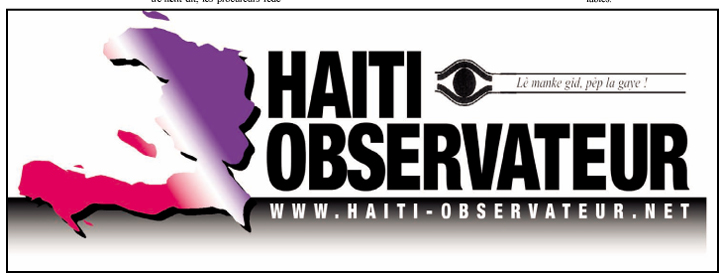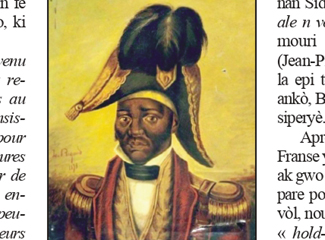Rediscovering Haiti Chéri by Jim Hutley
The one thing that has suffered the most in Haiti’s economy over the last six decades of dictatorships, hurricanes, and a massive earthquake in 2010 is the lack of a vibrant tourist industry. Prior to the Duvalier regimes, beginning in 1957, Haiti had a relatively strong tourist business with fashionable hotels in Port-au-Prince and some small beach resorts between the capital and Petit Goâve and north on Route Nationale # One towards St. Marc.
Tourism picked up a fair amount after Jean-Claude Duvalier took over in 1971 but it has never risen to the levels of Jamaica or Haiti’s next door neighbor, the Dominican Republic.
Today, Haiti’s largest tourism is made up of mission groups that come for a week to ten days and usually travel to a local area far from cities where they will concentrate their efforts helping and encouraging local churches, particularly evangelical ones.
This is good and better than nothing, but Haiti has so much potential when it comes to making use of its historical sites and beautiful beaches that it is losing out on a wealth of prosperity which would inevitably trickle down to the poorest local residents.
One of my favorite places is avacation spot along the lower coast of Haiti’s southern peninsula called Zanglais. A small cove located 31 miles (50.6 kilometers) from Les Cayes. It lies between the Morne Saint George and the Plain of Aquin — a stretch of about eight miles. There along a beachfront, there was this beach house on a hill above the beach. The original beach house no longer exists but there is now another Guest House there today run by another mission whose ministry centers around shortterm mission groups.
Every summer, between 1945 and 1960s, this original beach house was where we and most all the other missionaries from the West Indies Mission vacationed, each taking turns orsigning up to share the house for a month. The place was so popular that we had to book our vacations early in order to get a spot.
During one year, my family spent a year living at this awesome place. Every morning and afternoon, we would spend at the beach — the whole family. My dad and mom and I used to build sandcastles or large holes in the sand to catch seawater — to see how long we could hold the water.
A favorite pastime was taking an innertube from a tractor wheel out into the deep and float for what seemed like hours. This was something we could only do with one of our parents with us. Occasionally we’d all get on — Dad, Mom, my sister and me. When our baby sister was old enough, she’d come out with us too.
It was thrilling to ride the waves, yet also the terror of being thrust under a monstrous wave. We always tried to get as far out past the breaking waves as possible, but at times a big one would sneak up on us. Ocean waves are incredible to watch. The monsters usually begin to form way out — sometimes a thousand feet or more from shore. They appear as nothing more than a smooth hump aboutfifty yards out. Arising and falling. Ebb and flow. But then, they just seem to sneak up on you.
Waves also have a reverse effect. Instead of throwing you into the shore, they have a tendency to pull you out — if you’re at just the wrong place at the wrong time.
This one time, Dad and Mom got us out past the breakers and out to where the water turns from a turquoise to a deeper blue, a royal hue. We thought we had gotten past the spot where there’s this “pulling effect.”
Fun was what this was all about. Family fun. Thisis one of many times that stick out in my mind when our family really had fun.
Until that day. After floating for twenty minutes or so, we noticed that we were much further from shore than usual. It seemed that try as we could, we couldn’t change direction. The undertow wasstrong and we kept going out — deeper and deeper, further and further away from shore.
Dad began to pray. His prayer turned to song. We began singing. Singing asloud as we could. But this time there was desperation in our voices. We were stuck in whatfelt like the middle of this big ocean and couldn’t go anywhere.
I thought of the stories Eliani, our house girl, used to tell us of dolphins coming to the rescue of stranded sailors at sea. I prayed God would send us dolphins to take ussafely to shore.
As we continued to cry, sing, and pray we continued to hope that God,the One who created the sea and us, would do a miracle — send a dolphin or a fisherman to our rescue.
Then, as if in a moment, my dad yelled, “I can touch bottom!” Mom agreed. She could do the same.
We made it! We were saved ! We never saw a dolphin, but one thing I knew, Someone had pushed us to shore. We couldn’t have done that ourselves. Not even my Dad.
Just like we were rescued that day, I believe tourism can rescue Haiti’s economy. Progress has been made especially in the Cap Haitian area and between Port- au-Prince and Gonaives, also on île à Vache (Cow Island) across from Les Cayes. But there is so much more that could be done.
The previous administration had big plans for the Côte de Fer area, but notmuch has become of that under the current presidency.
The airlines — American,Delta, Air France, jet Blue, Spirit and others — need to do more to promote Haiti as a resort destination. North American media need to do so much more to promote travel to this Pearl of the Caribbean. It’s time to rediscover the jewel that is Haiti Chéri.
this article is belong to the Haiti-Observateur newspaper weekly, edition of august 08 2018 and will be found at : P. 12) http://haiti-observateur.org/wp-content/uploads/2018/08/H-O-08-Aout-2018.pdf




